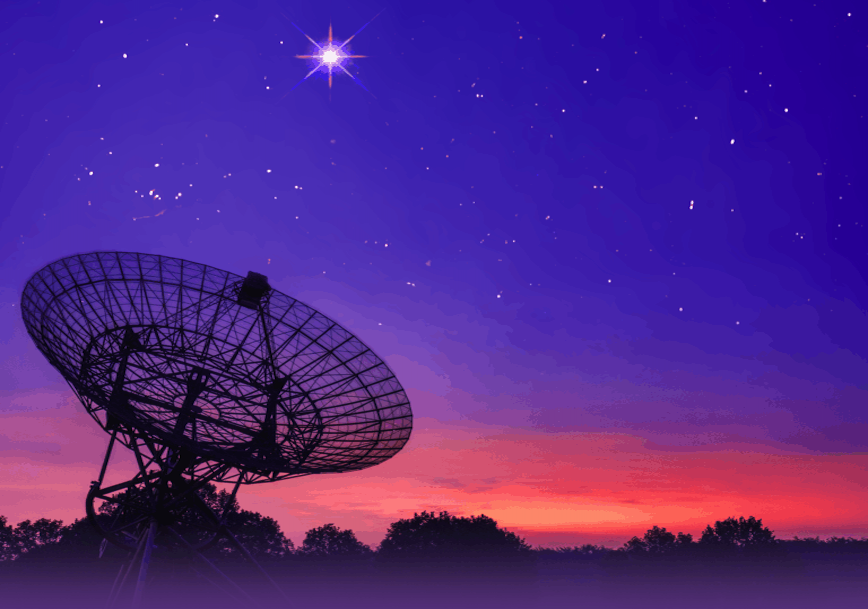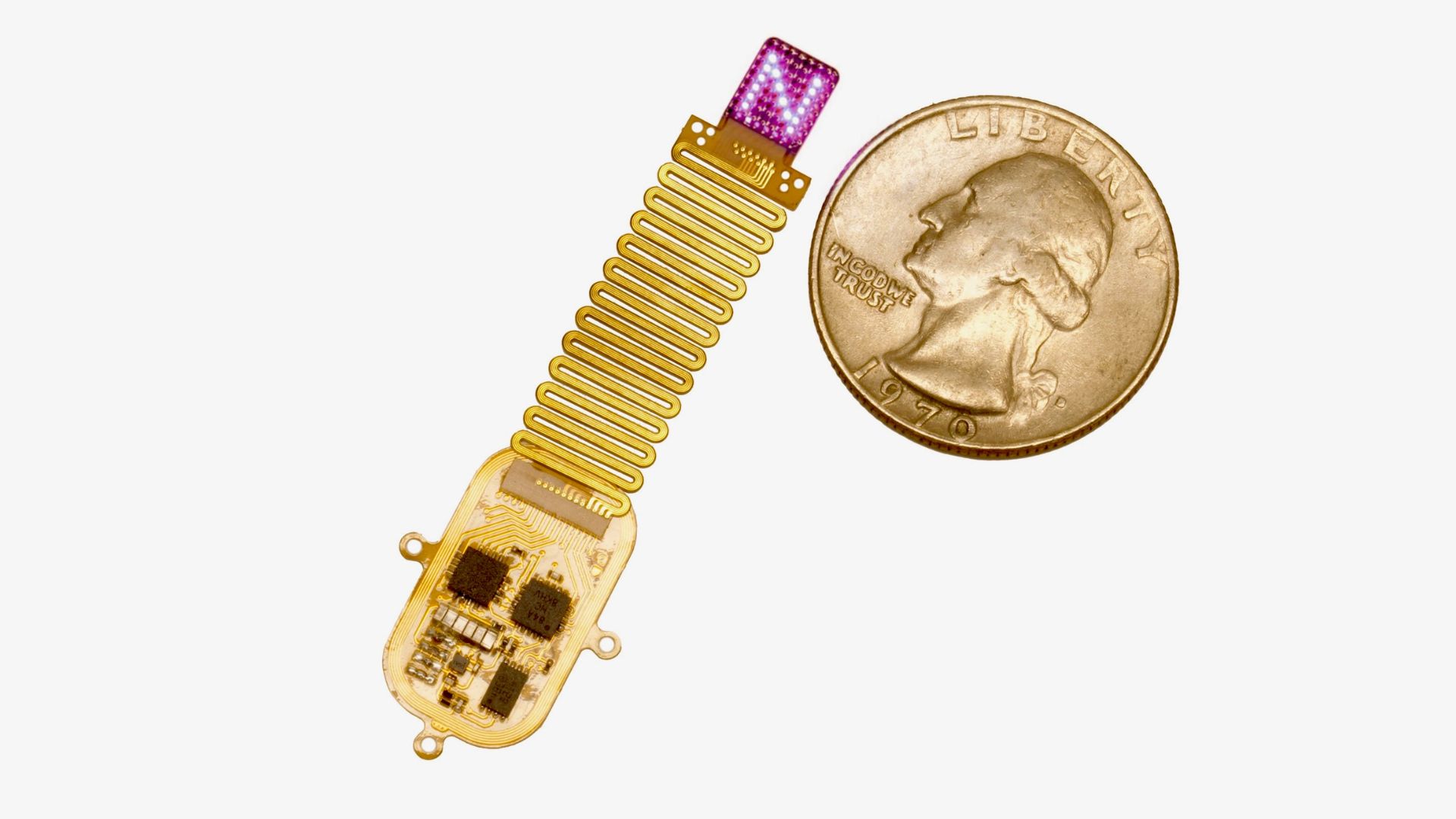Scientists detected the radio 'colors' of a fast radio burst for the first time
This could be further proof that magnetars are responsible for most, if not all, FRBs.

Scientists connected two of the largest radio telescopes in the world to take a close look at the mysterious "colors" of the intergalactic phenomena known as fast radio bursts (FRBs).
The researchers found that, while these millisecond-long flashes of light are invisible to human eyes, they glow with a veritable rainbow of radio wavelengths — and that could have big implications for what's causing them.
"Once we analyzed the data, and compared the [different] radio colors, we were very surprised," Inés Pastor-Marazuela, an astrophysicist at the University of Amsterdam and lead author of a new study on FRBs, said in a statement. The team determined the FRB was likely an isolated, slowly rotating magnetar, an extraordinarily dense, highly magnetic neutron star that crams the mass of a sun into a ball no wider than a city.
Light we cannot see
FRBs are some of the most energetic outbursts in the universe, packing more energy than the sun produces in three days into blips of light that last just a few milliseconds. Thousands of FRBs flash across the universe every day, but our human eyes see none of them; true to their name, FRBs only shine in radio wavelengths, far beyond the red edge of the visible spectrum.
However, the radio spectrum contains a miniature rainbow in its own right, with shorter radio wavelengths appearing blueish to radio telescopes, and longer wavelengths appearing reddish. In their new study, the researchers took a more detailed look at the radio "colors" of FRBs than ever before, by training two radio telescopes onto the same FRB source.
Using the Low-Frequency Array (LOFAR) and Westerbork Synthesis Radio Telescope (two radio telescopes from different facilities in the Netherlands), the researchers staked out a periodically-repeating FRB named 20180916B, which emits a salvo of bursts every 16 days or so.
One explanation for this FRB's predictable, repetitive schedule suggests that a binary star system is involved; every two weeks or so, the FRB source moves in front of its companion star (relative to Earth), briefly permitting the FRB's light to shine across space toward our telescopes. Systems like these include a constant storm of stellar wind blowing out of the FRB source's companion star, the researchers said — and that energetic, electron-packed wind should block certain radio wavelengths.
Get the world’s most fascinating discoveries delivered straight to your inbox.
"Strong stellar winds from the companion of the fast radio burst source were expected to let most blue, short-wavelength radio light escape the system," Pastor-Marazuela said. "But the redder long-wavelength radio should be blocked more, or even completely."
To test that hypothesis, the researchers used the two radio telescopes to target two different radio colors, looking at high, reddish frequencies with the Westerbork telescope, and low, blueish frequencies with LOFAR. If the binary model was correct, only the blue frequencies should make it past the star system's intense winds — however, that wasn't the case. The telescopes detected both red and blue radio frequencies emanating from the FRB, though never at the same time.
"We saw two days of bluer radio bursts, followed by three days of redder radio bursts," Pastor-Marazuela said. "We rule out the original [binary wind] models now—something else must be going on."
Magnetars on the move
This finding has a few big implications for FRB research. For one, the environment around this FRB is probably a "bare" one, the researchers said — meaning there's likely very little stellar wind hazing things up and blocking the redder light frequencies from escaping. That rules out a binary system, the team said.
The better explanation is that FRB 20180916B is being made by a magnetar. As the magnetar slowly rotates, its bright magnetic field could shine toward Earth every two weeks or so, creating the repetitive FRB observed in this study.
That explanation would fit with previous FRB research, too; in 2020, scientists traced a different FRB to a known magnetar in the Milky Way, offering a definitive FRB source for the first time. Now, by revealing FRB 20180916B's true colors, astronomers may soon be able to add one more star to that list.
The new study was published August 25 in the journal Nature.
Originally published on Live Science.

Brandon is the space / physics editor at Live Science. With more than 20 years of editorial experience, his writing has appeared in The Washington Post, Reader's Digest, CBS.com, the Richard Dawkins Foundation website and other outlets. He holds a bachelor's degree in creative writing from the University of Arizona, with minors in journalism and media arts. His interests include black holes, asteroids and comets, and the search for extraterrestrial life.



